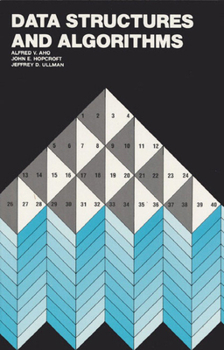Data Structures and Algorithms
Select Format
Select Condition 
Book Overview
Customer Reviews
Rated 5 starsA JEWEL
Perfect book. Nice and small. You can buy it cheap too, it's old. But it's full of the meat and potatoes, no fluffy Java source code. Sure, it uses Pascal, but it's not that hard to understand Pascal code even if you never programmed in Pascal (me neither). What matters is the discussions behind the scenes. It covers the whole range of what you should know and it's concise. They don't write books like this anymore.
1Report
Rated 5 starsThe best introduction to the field - a pleasure to read
A textbook by Aho/Hopcroft/Ullman is sort of a guarantee of quality - and this one is no exception. These people are among the greatest researchers and teachers in Computer Science, and this book is a great opportunity to 'learn from the masters'. As an introduction to the fascinating field of Data Structures and Algorithms, this is perhaps the best textbook you'll find out there. Starting with the basics, the...
2Report
Rated 5 starsA classic text on programming
This book stands out among countless books written on the subject. It basically deals with the two ingrediants of programming ,Data Structures and Algorithms.The first part gives a wonderful introduction to the concept of Data Structures.It goes on to deal with several classes of Data Structures such as lists, stacks, queues, trees and graphs.. This book is profusely illustrated with examples, and lots of exercises for the...
0Report
Rated 5 starsThe Best Intro To Data Structures and Algorithms
I was lucky enough to take a course in Data Structures and Algorithms with Prof. Aho and this was the text. Probably the best I have ever used. As friends and associates went through school they would invariably throw away the book they'd bought for their Data Structures course and buy a copy of this. Clear, concise, full of good code. A must
1Report













